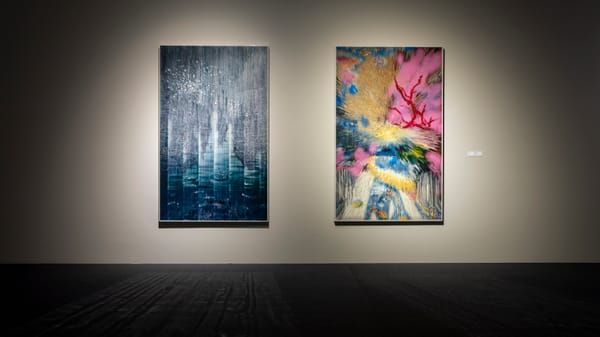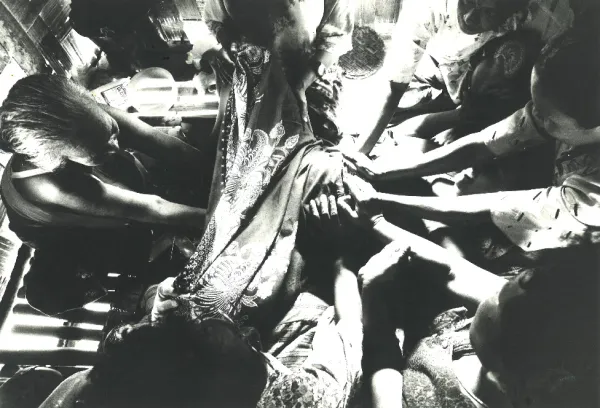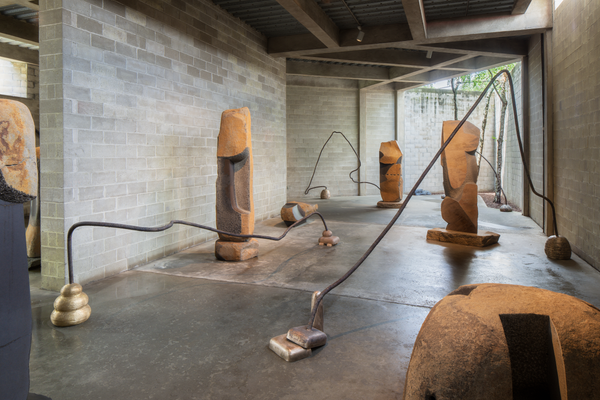Shows
The Mixed Signals of Yasunao Tone
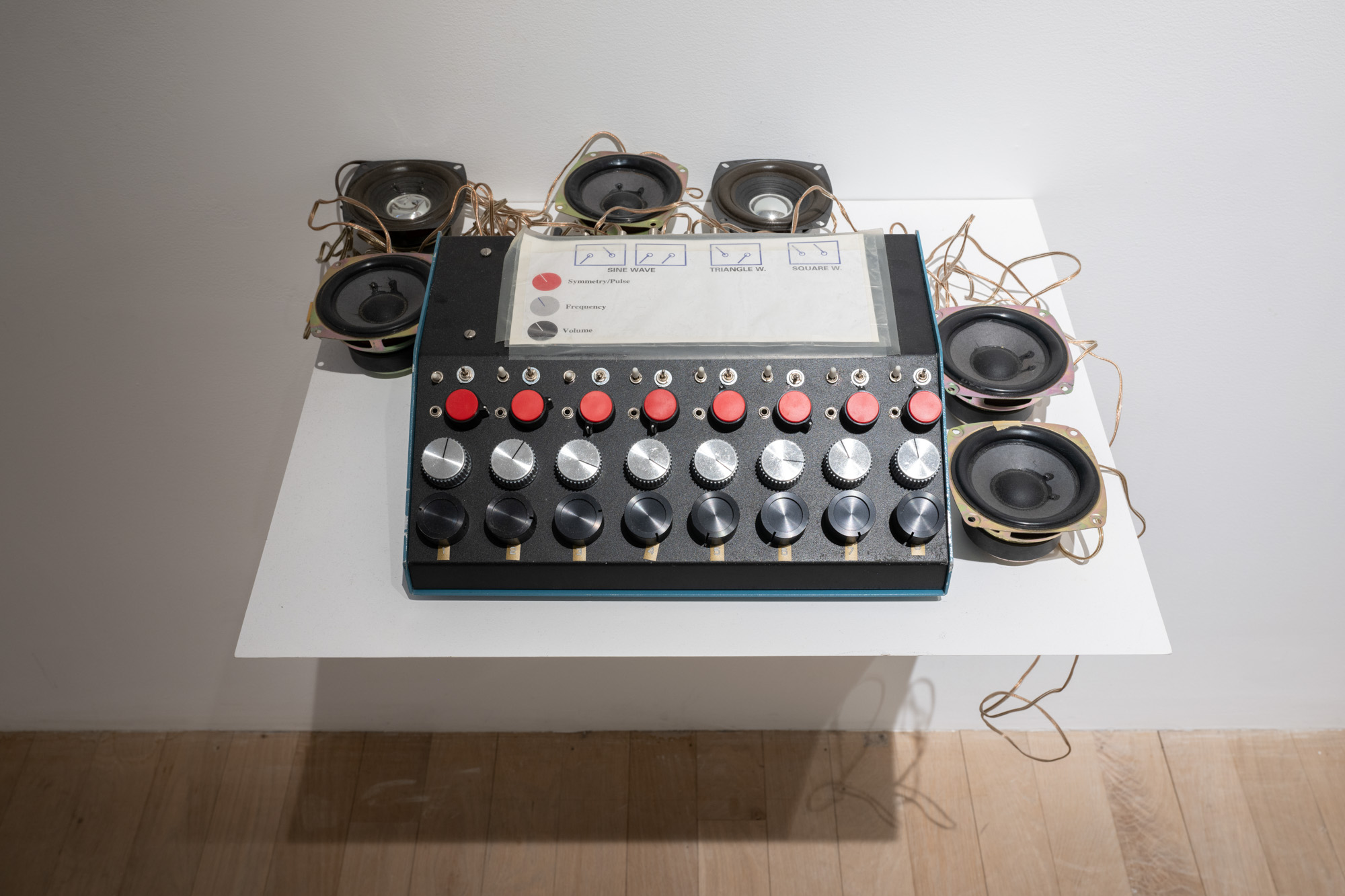

Artists Space organized a retrospective dedicated to Yasunao Tone—a restless and active New York-based artist who is a key Fluxus figure—surveying works from the artist’s early and mid-career points from the 1960s to the 1990s. His art filled three rooms across two floors with no immediately apparent logic to the layout. The pieces were neither arranged by chronology nor by theme but perhaps by impact. Greeting the viewer upon entering the gallery was a 15-minute film projected on the wall, a component that comprises Molecular Music (1982–85), one of Tone’s most well-known works. Imagery that translates Chinese characters found in classical poetic texts—a temple, a mountain, a naked woman, among others—flickered in rapid succession. On a shelf next to the projection sat speakers, wiring, and light sensors. Whenever Tone performed Molecular Music, he would attach the sensors to the projected screen so that the light beams would trigger a random, unpredictable sound from the speakers rigged to the oscillator. Using analog methods (in recent works, he has adopted digital tools) and crossing several mediums, Tone executes several conversions, transforming written text to visual information to auditory signals.
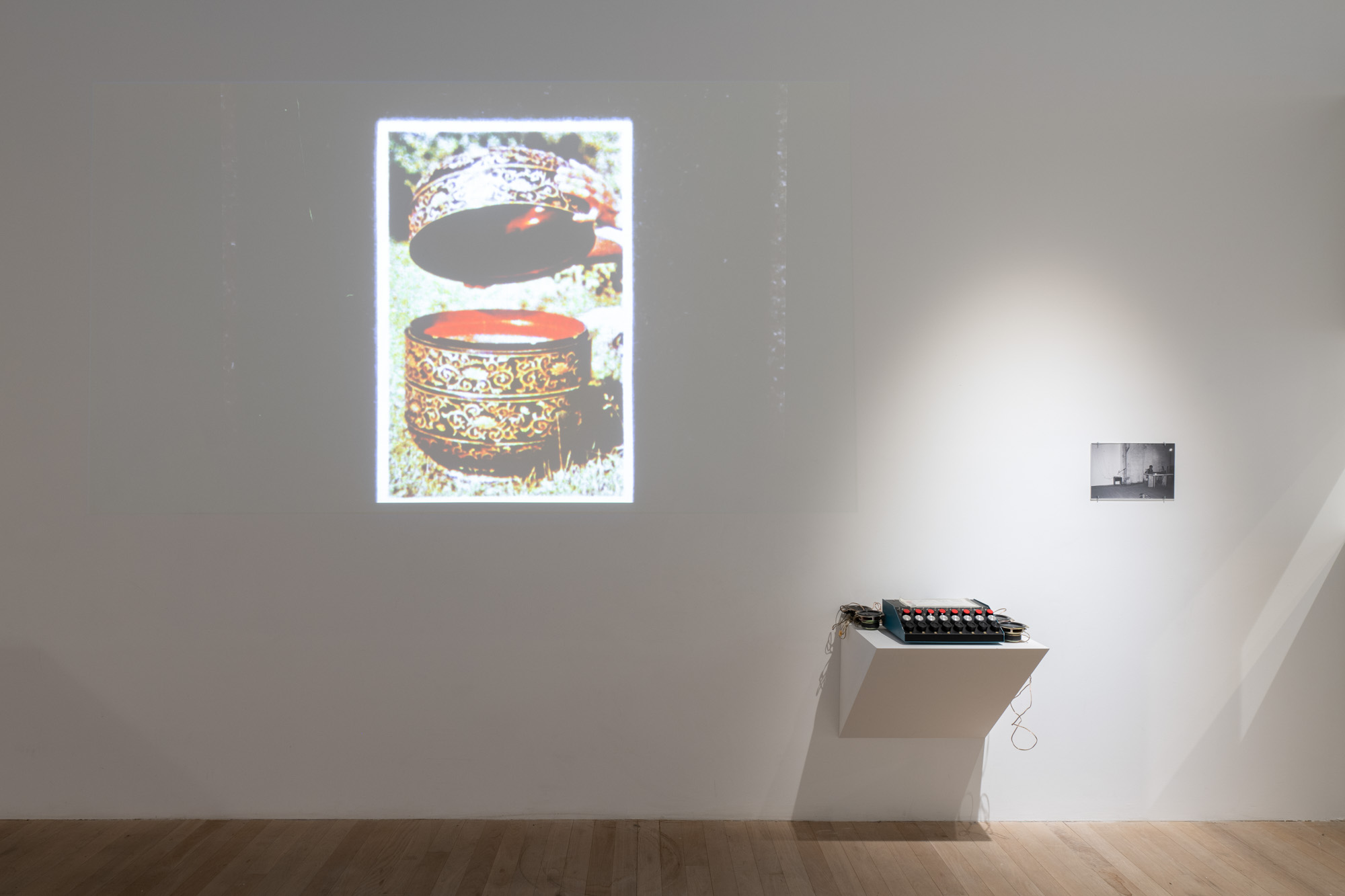
Deeper into the gallery, in a room filled exclusively with his work, documents of art pieces and events were grouped in zones without discernible linkages between them. There were records of early events and performances held before Tone was in New York, such as the first and last public concert as Group Ongaku (Group Music), in which he played John Cage-like improvisational music with other members; ephemera tied to happenings held at Grand Central Station and Shea Stadium; and reams of graphic scores with accompanying cerebral directions for play.

One of Tone’s earliest and simplest scores Clapping Piece (1963) was found on a wall and in a vitrine, consisting of a conductor and any number of players. “Clap evenly and incessantly (not to attempt making rhythm),” writes Tone in the first of an eight-part instruction later published in a 1983 issue of Ear Magazine. Illustrated on black cardboard paper with white ink, the score contains intricate geometric patterns. In the outer portion, there are four quadrants. Within one, there are four more; within one of those, there are four more. A few of these parts have an additional tiny one extending out, making a fifth inner layer. Taken as a whole, Clapping Piece resembles a group of nesting snowflakes.
Throughout the exhibition, cacophonous sounds of recorded performances emitted either from headphones hooked up to vitrines or small speakers attached to TV monitors. The one sound that ultimately became recognizable amid the din was the sustained notes heard in Music for Reed Organ (1963), a tape of a 32-minute performance playing next to the small Pearl River organ. First performed in 1962 at his debut solo show at Tokyo’s Minami Gallery, the piece incorporates time in an explicit way as Tone works the keys and pedals in conjunction with the movements of hands on a clock. His score—a circle made up of thin and thick segments and a wavy red outer line, like the diagram of a planet—is placed over the clock, the marks of which indicate the duration of each sound made when comparing the distance between the lines on the score and the clock hand.


Artists Space’s exhibition provided an enlightening but infuriating display of Tone’s work. The show charted various periods in Tone’s career, elucidating themes of translation, duration, and multi-media practice. However, to glean such an understanding took a bit of time and consideration with each displayed work. A few paragraphs of displayed text were included with each cluster of objects, supplying crucial cultural, biographical, and social contexts. For such a historical and extensive exhibition, however, it wasn’t enough. Although there was a handout that listed everything in the show, more wall text would have been helpful to clearly identify the objects, photos, texts, posters, and films documenting Tone’s works. Instead, the art seemed not in conversation but in competition with itself.
Yasunao Tone’s “Region of Paramedia” is on view at Artists Space from January 13 to March 18, 2023.





